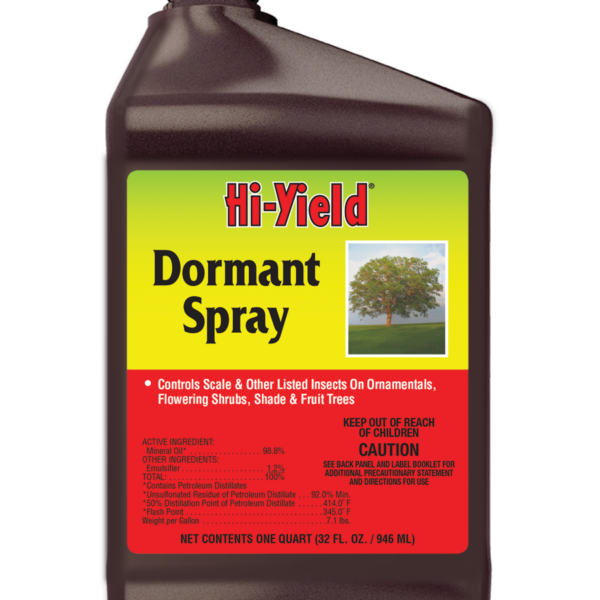Winter Fruit Tree Care
A good spray program includes using a dormant oil spray during winter pruning or any time before bud break. We recommend applying Hi-Yield Dormant Oil Spray in late winter or early spring. Application of this spray protects apples, pears, cherries and grapes from scale, mealy bugs, aphids, mites and pear-pyslla.
Winter Pruning: New Fruit Trees:
Start your fruit tree off right by pruning when planting. The primary reason we do this is to keep the fruit tree in balance with its root system especially when planting. If there is an imbalance it can cause the tree to be stunted. It also helps the fruit tree to bear fruit sooner.
Pruning the fruit tree stimulates growth. You will have a stronger more vigorous tree after a single growing season. A pruned tree will be bigger than a matching unpruned tree. Begin shaping your fruit trees early. Their natural growth tendency is not always the best for maximum fruit production.
Winter Fruit Tree Pruning:
Prune fruit trees in mid-late winter. Remove weak, injured or narrow- angle branches, the
weaker of any crossing or interfering branches, and one branch of forked limbs. You want to keep your tree from becoming too thick and crowded.
Train young trees to grow in a spreading shape. Keep in mind the image of a mature tree as you prune away buds or twigs. Your goal is to develop a strong tree with a branch structure strong enough to support heavy crops. You also want to prune so that plenty of sunshine gets in. You do not want the branches to be so thick and tight that sunlight cannot reach the fruit. Prune to admit more light to the center of the fruit tree.
Central Leader – Apples and pears, which bear heavy fruit, are often trained to form a central leader. This system encourages one main trunk with strong side branches. Maintain open space between limbs and thin secondary branches to allow sunlight and air to reach the center of the tree. As the trees age, it is possible to switch to a modified central leader training which requires less annual pruning. In orchards, these trees are sometimes pruned to a lower and wider modified leader form from the start. Much depends on how you want the tree to look in your yard.
Modified Leader – Begin pruning the same way as the central leader form with one strong central trunk. In the second or third year allow more than one strong branch to grow forming several leaders. The modified leader system may be easier to maintain since many fruit trees tend to grow this way naturally. It is recommended for cherries and plums.
Open Vase Method works well for peaches, nectarines and apricots. This method opens up the center of the tree to let light and air in but can create weaker branches and is not recommended for apples and pears. Avoid several limbs growing from nearly the same point on the trunk or weak crotches will result. Space the principal limbs out over as much area of the trunk as possible.
Ison’s Nursery & Vineyards offer many varieties of fruit trees, berry plants, nut trees and grape vines.
Check out our shop!








